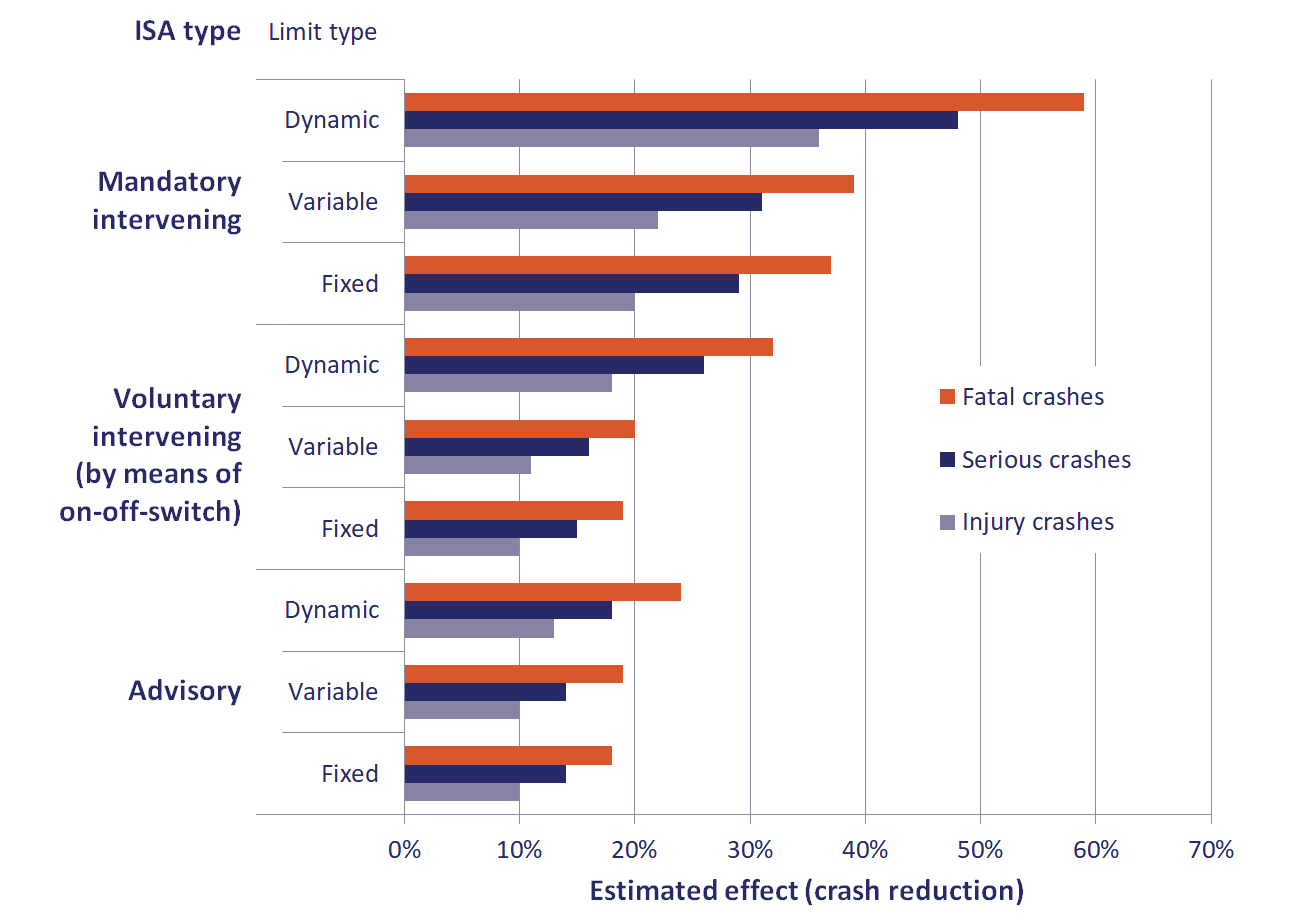Intelligent Speed Adaptation (ISA) is a system that compares vehicle speed to the speed limit or to the required speed. It informs or warns the driver, or intervenes if the driver drives too fast. This prevents high speeds, one of the main crash factors (also see SWOV fact sheet Speed and speed management).
ISA has become a proven technology highly recommended by other organisations including the European Transport Safety Council [20]. In 2004, a study in 23 European countries demonstrated ISA’s appeal: 59% supported the system, with the Netherlands scoring 51%. Among Dutch interest groups from industry, road users, public authorities etcetera, the informative ISA appeared to be the most popular among 18 safety provisions [22]. In 2018, the European Commission proposed making a haptic (touch sensitive) version of ISA mandatory [9]: “It shall be possible for the driver to feel through the accelerator pedal that the applicable speed limit is reached or exceeded.” The effect of ISA types differs: a mandatory intervening ISA the largest effect, an advising ISA the smallest. The effect also depends on the type of speed limit. Effects are largest in case of dynamic limits, meaning limits that are dependent on the actual weather and traffic conditions. Furthermore, ISA has a larger effect on the more serious crashes, as shown by Figure 2.
 Figure 2. Most reliable estimation of crash reduction by ISA type (mandatory intervening, voluntary intervening (driver-select) or advisory) and speed limit (fixed, variable or dynamic) [23]
Figure 2. Most reliable estimation of crash reduction by ISA type (mandatory intervening, voluntary intervening (driver-select) or advisory) and speed limit (fixed, variable or dynamic) [23]
A survey by Vlassenroot [24] among 7000 Belgian and Dutch participants found that approximately half of them would like to have ADAS and almost all of them would like some form of ISA. Informative ISA is preferred by 30%, the warning type by 38%, while 12% prefers the supportive ISA and 15% the intervening ISA. The supportive type scores remarkably poorly and Vlassenroot suspects that the participants are unsure about what the different types mean. The haptic type proposed by the EU – which Vlassenroot would probably call ‘supportive’- is not mandatory but goes slightly further than a mere ‘advisory’ type. Moreover, these will concern fixed speed limits or, possibly, time-bound variable limits. For a successful introduction, a reliable digital map containing these limits is needed. GPS positioning should be able to distinguish between the road the driver is travelling on and adjacent roads, for instance a service road adjacent to a motorway.
